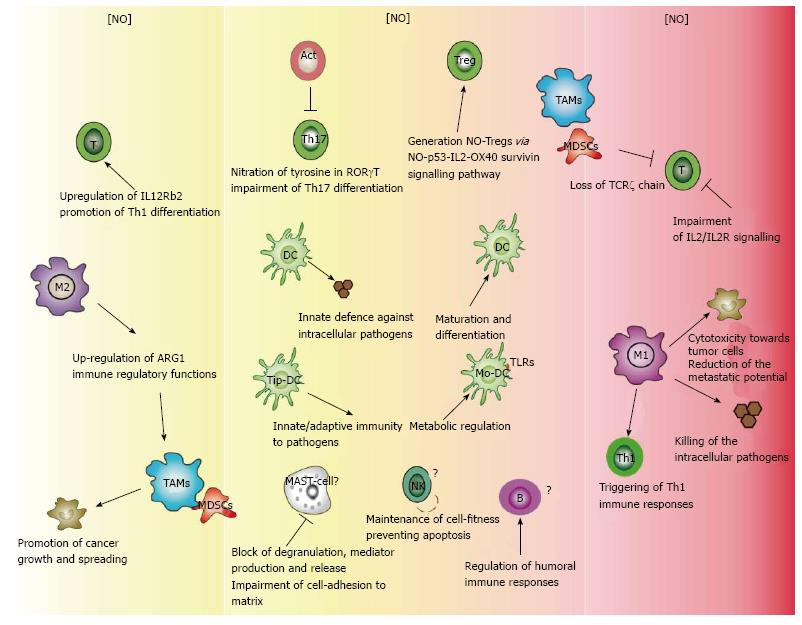Copyright
©The Author(s) 2015.
World J Exp Med. May 20, 2015; 5(2): 64-76
Published online May 20, 2015. doi: 10.5493/wjem.v5.i2.64
Published online May 20, 2015. doi: 10.5493/wjem.v5.i2.64
Math 1 Math(A1).
Figure 1 Distinctive effects of nitric oxide in immune cell subsets.
Nitric oxide (NO) represents one of the key players involved in immunity and inflammation. The figure depicts the distinctive effects of NO within immune system, recapitulating its controversial behaviour. Low levels (left) could either favour Th1 response or immunoregulatory environment, while high levels (right) are either necessary for M1 macrophage effector function or could impair T cell activation. This opposite behaviour is more evident where NO concentration is poorly defined (middle), where NO sources and effects are more debated. Question marks tag open issues in the field. → or ┤ point out the effects of NO directly produced by the indicated cell on different targets. ← or ├ point out the effects of NO originated by different (not specifically indicated) sources on different targets. TAM: Tumour-associated macrophage; MDSCs: Myeloid-derived suppressor cells; IL: Interleukin; DC: Dendritic cell; NK: Natural killer cell.
- Citation: Predonzani A, Calì B, Agnellini AH, Molon B. Spotlights on immunological effects of reactive nitrogen species: When inflammation says nitric oxide. World J Exp Med 2015; 5(2): 64-76
- URL: https://www.wjgnet.com/2220-315X/full/v5/i2/64.htm
- DOI: https://dx.doi.org/10.5493/wjem.v5.i2.64














